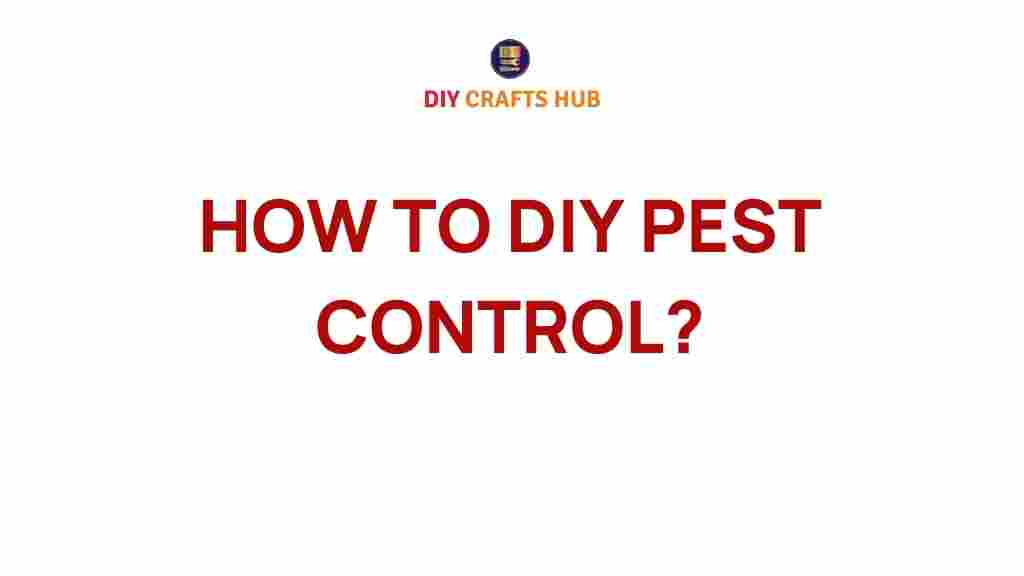Master the Art of DIY Pest Control
Keeping pests at bay is essential for maintaining a healthy and comfortable home. However, professional pest control services can be expensive and might not always suit your schedule or preferences. Luckily, *DIY pest control* is an effective, affordable, and rewarding alternative that empowers homeowners to manage and prevent infestations on their own terms. This guide will take you step-by-step through the process of mastering DIY pest control, ensuring your home remains a pest-free haven.
Why Choose DIY Pest Control?
Opting for DIY pest control offers several advantages:
- Cost-Effectiveness: Save money by using readily available products and tools.
- Flexibility: Address issues at your own pace and customize solutions based on your home’s needs.
- Eco-Friendly Options: Choose non-toxic or natural remedies that are safer for your family and the environment.
Before diving into specific techniques, it’s crucial to understand the types of pests commonly found in homes and the risks they pose.
Common Household Pests and How to Identify Them
Different pests require different strategies. Here are some of the most common intruders:
- Ants: Often found near food sources, ants travel in visible trails.
- Cockroaches: Active at night, these pests prefer warm, dark, and moist areas.
- Rodents: Signs include droppings, gnaw marks, and scratching sounds in walls or ceilings.
- Termites: Look for mud tubes near your foundation or hollow-sounding wood.
- Bed Bugs: Small, reddish-brown insects often leave itchy bites and bloodstains on bedding.
Step-by-Step Guide to Effective DIY Pest Control
Follow these steps to take control of pest issues in your home:
1. Inspect Your Home
The first step in DIY pest control is identifying where pests are entering and nesting. Conduct a thorough inspection of:
- Cracks and gaps in walls, doors, and windows
- Dark and cluttered spaces like attics, basements, and garages
- Kitchen and pantry areas where food is stored
2. Seal Entry Points
Use materials such as caulk, steel wool, or weather stripping to block entry points. Pay special attention to:
- Gaps around doors and windows
- Holes in walls or flooring
- Pipes and utility lines
3. Clean and Declutter
A clean home is less inviting to pests. Focus on:
- Regularly vacuuming and mopping floors
- Storing food in sealed containers
- Decluttering to eliminate hiding spots
4. Use Natural Remedies
For an eco-friendly approach, try these natural solutions:
- Ants: Sprinkle diatomaceous earth or use a vinegar-water spray.
- Cockroaches: Set traps using baking soda and sugar mixtures.
- Rodents: Repel them with peppermint oil or ultrasonic devices.
5. Apply DIY Pest Control Products
Choose products designed for home use, such as:
- Baits and Traps: Effective for ants, cockroaches, and rodents.
- Insecticides: Opt for low-toxicity sprays or powders.
- Barrier Treatments: Create a protective perimeter around your home with granules or sprays.
Troubleshooting Common Challenges in DIY Pest Control
Even with diligent efforts, some issues may persist. Here’s how to handle them:
- Pests Returning After Treatment: Reassess entry points and ensure you’re addressing root causes like food or water sources.
- Resistance to DIY Methods: Rotate products or combine different techniques to enhance effectiveness.
- Unidentified Infestations: Consider consulting a professional for a thorough inspection if problems persist.
Remember to use products safely by following label instructions and wearing protective gear when necessary. For more safety tips, visit this EPA resource on pest control safety.
Preventing Future Infestations
Once your home is pest-free, implement these preventive measures:
- Regular Maintenance: Inspect your home quarterly for signs of pests or structural vulnerabilities.
- Yard Care: Keep vegetation trimmed and remove standing water to reduce breeding grounds.
- Monitor Entry Points: Ensure all sealed areas remain intact over time.
For additional guidance, check out our comprehensive home maintenance checklist.
Conclusion
Mastering the art of DIY pest control is not just a practical skill—it’s an investment in your home and family’s well-being. By following these steps, you can create a proactive defense against pests while saving money and staying in control of your environment. With consistency, attention to detail, and the right tools, your home can remain a pest-free sanctuary year-round.
Get started today and take pride in protecting your home with your own hands!
This article is in the category Home & Decor and created by DIYCraft Team
